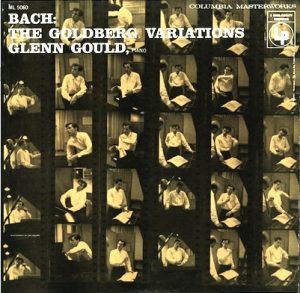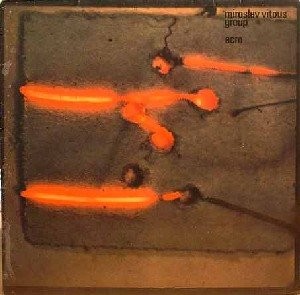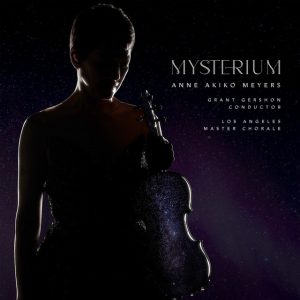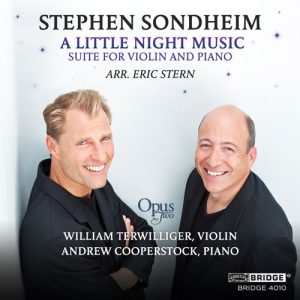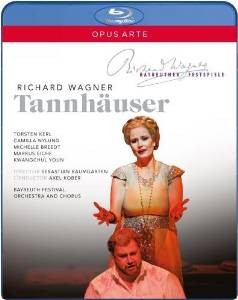This issue of Notes on Recent Finds includes a mix of recordings found at NativeDSD. Several albums are from the quite remarkable Sono Luminus label, whose recordings (by engineer Daniel Shores) are supremely good. I've written about their albums in other articles. I'm including three more here. Also included is a delightful new recording from Channel Classics for bassoon and strings, an excellent complete Beethoven piano sonatas cycle by Peter Takács, an important premier recording of a great American composer, George Walker, and a new Yarlung Records release in Pure DSD256 (always greatly anticipated, and no disappointment). And, don't miss the always remarkable Dana Zemtsov in classic works for solo viola and the very nicely performed and recorded Brahms Cello Sonatas on the Spanish label IBS Classical. Enjoy.
- Confluence: Balkan Dances & Tango Nuevo - Mina Gajic & Zachary Carrettin
- The Guitar - Rupert Boyd
- Boundless: Schubert Sonatinas for Violin & Piano - Mina Gajic & Zachary Carrettin
- Paganini & Rolla: Chamber Music for Bassoon and Strings
- The Complete Beethoven Sonatas, Volumes 1-11, by Peter Takács
- George Walker Sinfonia No. 4 "Strands" - Gianandrea Noseda, NSO
- Sangam, Music of Northern India - Paul Livingstone (sitar), Pete Jacobson (cello) (PureDSD)
- Brahms Cello Sonatas - Asier Polo, Eldar Nebolsin
- Enigma, works for Solo Viola - Dana Zemtsov
Confluence: Balkan Dances & Tango Nuevo, Mina Gajic & Zachary Carrettin. Sono Luminus 2022 (DXD) HERE
Simply outstanding! This collection of Balkan Dances and Tango Nuevo is bound by the folk traditions from which the music derives. Brought together from a continent apart, these folk music traditions complement each other with an earthy brilliance that is both engaging and pure delight.
The Seven Balkan Dances were written by Marko Tajčević (1900 – 1984) who was born in an area that is now part of Croatia. Pianist Mina Gajiic writes that these are a "musical reflection of the cultural influences in my childhood, in what was then Yugoslavia. Certain rhythms, melodic fragments, and harmonic progressions conjure visceral memories from traveling throughout the rich cultural landscapes across the region, and of singing and dancing traditional songs in several dialects as a child and music student." One will hear many of these same rhythms and melodic fragments in the works of Bartok and Enescu, but here they are more concentrated and clarified.
The Tango Nuevo were composed for violinist Zachary Carrettin by modern composer Ray Ganlund (b.1975). Ganlund has channeled the feel of the tango in these modern interpretations of the genre. They invite improvisation, a facet that Carrettin fully explores in accompaniment on piano by Gajic. The final "Tango du joli printemps" is Ganlund's tribute to Francis Poulenc quoting the melody from the third song of his Chansons villageoises song cycle. It makes for a vivacious close to this excellence set of dances.
The recording was made in Sono Luminus' acoustically delightful recording studio in the old church which they acquired in Boyce, Virginia. Recording engineer Daniel Shores again works his magic to recreate the very compelling sense of a live performance to which we've been invited to sit in the optimal audience seat. Highly recommended all around.
The Guitar, Rupert Boyd. Sono Luminus 2022 (DXD) HERE
Rupert Boyd is the master guitarist half of the guitar/cello duo Boyd Meets Girl about whose prior two albums as a duo I've written HERE. In this solo album, Boyd plays homage to the guitar. This is a journey through many classics of the guitar repertoire presented in Boyd's highly articulate playing style.
Of the many works performed, only the pieces by Fernando Sor (1778 - 1839) and Leo Brouwer (b. 1939) were written originally for the guitar. All the other works (by Bach, Jobim, Koehne, Piazzolla, and Lennon/McCartney) are arrangements. The fact that these arrangements for guitar are so successful is, as Boyd writes, "a testament to the strength and versatility of the guitar to not only play such a diverse range of repertoire, but to truly embrace it." And masterful arrangements these are.
And masterful, too, are Boyd's performances.
Fully assured, Boyd brings life and energy to each of these pieces, bringing forth the color and nuance, the delicate shadings of meaning, the various unusual harmonies and contrasts. It is a master class in technique and interpretation.
Recording engineer Daniel Shores once again delights me with a superbly natural sounding recording that takes full advantage of the lovely acoustics in Sono Luminus' church sanctuary studio, with its heart pine wood floors and 25 foot vaulted wooden ceiling. Airy, resonant, with just the right amount of reverberation and decay to the sound, this recording has a very charming and seductive sound that nicely complements Boyd's acoustic guitar. Highly recommended.
Boundless: Schubert Sonatinas for Violin & Piano, performed on historical instruments, Mina Gajic & Zachary Carrettin. Sono Luminus 2020 (DXD) HERE
These are performances full of life and delightfully performed. Hearing them played on straight-strung piano and gut-strung violin adds an addictive vibrancy to the music, and opens new understandings of the interplay that Schubert may have envisioned in composing these works. As in their other recordings (e.g., Confluence in the review above), Gajic and Garrettin play together as if bonded in both mind and heart, they play with utter synchronicity and sympathy even if the music they play is boundless (sorry, couldn't help myself).
I value hearing works performed on instruments of the composer's time period. The phrasing, the inflections, the timbre, the balance of instruments is simply different than when played with modern instruments. There is value to both, certainly. But there is so much to learn from the music when hearing it as the composer might have heard it. So, the performances of these early works by Franz Schubert (1797 - 1828) are right up my alley.
Mina Gajic plays an Érard straight-strung piano built in 1835, shortly after Schubert's death. This French piano has a richer sound than the Viennese pianos of Schubert's time (which tended to sound more like fortepianos), but pianos from the Érard firm were in regular performance in Vienna during Schubert's life. Both Haydn and Beethoven played on Érards. As compared to a modern piano (e.g., a Steinway), the registers of the straight-strung pianos are clearly distinct due to not overlapping—there is a purity of sound we don't hear on cross-strung grand pianos. There is also a lithe delicacy of sound, but a sound which is also a bit softer.
Zachary Carrettin plays a gut strung violin built after the World War II but set up for late Classical and early Romantic historical instrument performance. The significant distinction is his use of a classical period bow from circa 1800. As explained in the liner notes, this pre-modern, transitional bow is a perfect example of the bows still in favor in Vienna at the time the Sonatinas were composed. It differs from the modern bow in favoring dips and surges over sustain—smaller shapes within a larger line. The artists write:
"The gut strings also offer a significant contribution to the reading of these works. Just as the parallel-strung piano has tonal distinctions between the registers, so do the gut strings on the violin. When employed, vibrato 'activates' the strings in a different manner than on today's synthetic strings, and the relationship of bow weight, speed, and point of contact change the resulting character of sound. Having played these works on both modern and historical instruments, we find the Sonatinas tend to be more playful on the original instruments, and yet, the contrasting dramatic tensions in the music are evident and sometimes shocking."
I must say that my one regret for this album is that it was not recorded in Sono Luminus' own old church studio in Boyce, VA (as was Confluence, above). This alternate venue does not sound acoustically conducive. It is this, I think, that causes recording engineer Daniel Shore to place his microphones closer to the instruments resulting in a less capture of a natural acoustic environment and a slightly harder, perhaps too up-close sound. Nevertheless, these are lovely performances and the instruments are a delight together.
Paganini & Rolla: Chamber Music for Bassoon and Strings, Andrea Bressan and Giovanni Guzzo, with Dana Zemtsov. Pau Codina, Gabrielle Shek. Channel Classics 2022 (DSD256) HERE
I admit to being drawn to chamber music. I love the intimacy and the close interplay of musicians attuned to each other and playing with a collegial exchange of ideas. A well performed chamber recital is simply a delight. And this is certainly such a recital. As I scanned the description of the album and saw the performers involved, it was a no-brainer to check it out. Andrea Bressan is the principal bassoonist for the Budapest Festival Orchestra, an orchestra I hold in high regard. Dana Zemtsov, viola, has delighted me in several of her recordings (see here and here). And Giovanni Guzzo, violin and recently appointed concertmaster of Camerata Salzburg, has been on my radar for a while now to check out.
And there is no disappointment here. These are performances of gentle works that explore the art of the possible and the artful mastering of the impossible. Such is most particularly true of their performance of Allesandro Rolla's (1757 - 1841) Tre Duetti Concertanti per violino e fagotto, which is well worth the cost of the album all on its own. The Paganini Duettos 1, 2, and 3, which take up most of the album are all pleasurable but my greater enjoyment came from the interlude works separating the three Duettos, particularly the Divertimenti Carnevalschi per due violini e basso of track 8.
Bassonist Andrea Bressan and violinist Giovanni Guzzo clearly enjoy challenging each other to rise to their best. Together, they provide life into a good dash of brio to the album, and Bressan's tone remains engagingly pleasant throughout. The contributions by Zemtsov, Codina and Shek are all enjoyable in the works in which they collaborate with Bressan. Altogether, this made for a very enjoyable 80 minutes of superb musical engagement.
All of this is helped tremendously by the warm, detailed and highly transparent sound provided by recording engineer Jared Sacks. The balance of the instruments within the nice acoustic of the hall in Villa San Fermo, Longino, Italy, is superbly captured. Everything sounds very natural, warm and relaxed. Another very special recording from a person I have come to respect greatly for his contributions to excellence in recorded music. Thank you, Jared.
The Complete Beethoven Sonatas, Volumes 1-11 by Peter Takács. 2011, 2022 (DSD64) HERE
To start, consider a volume from the recently released Complete Beethoven Sonatas by Peter Takács, which you can purchase either individually or as a complete set. I've not finished listening to all of them, but I have listened to a broad representative sampling and I've found them to be most engaging, well performed and nicely recorded. The performances are consistently well within the top ranks of performances one might find, and the sound quality exceeds that of most recordings available.
Takács takes a middle road in his interpretations—consistently very solid, no excesses, and eminently satisfying. His playing style is very clean, supple and nuanced. And he can deliver power as called for.
These performances were recorded in 2001-2007 by John Newton of Soundmirror, who knows what he's about, and were originally released in 2010 as an eleven disc Stereo/Multichannel Hybrid SACD set on the Cambria label. By arrangement with NativeDSD, they are now available for download in both 5-channel and stereo in DSD64, 128, and 512. I'm listening to the DSD64 stereo files and the 9'6” Bösendorfer Imperial Grand Piano on which Peter Takács plays sounds simply superb—the sound perspective neither too close nor too far and the detail rich and highly resolved.
If these were my only recordings of the Beethoven piano sonatas, I could live well satisfied.
Peter Takács, courtesy of Cambria Master Recordings
George Walker Sinfonia No. 4 "Strands", Gianandrea Noseda, The National Symphony Orchestra. NSO Live 2022 (DSD256 single) HERE
George Walker (1922-2018) was a child prodigy. Born in Washington, D.C., he enrolled in Oberlin Conservatory at the age of 14 and received his Bachelor of Music degree with highest honors at the age of 18. He subsequently studied piano with Rudolph Serkin and composition at the Curtis Institute of Music where he became the first Black student to receive the Artist Diploma (in both piano and composition) in 1945. He holds the distinction of being the first Black composer to be awarded the Pulitzer Prize for Music (April, 1996) for his composition Lilacs for Voice and Orchestra.
In January 2022, the National Symphony Orchestra (NSO) and Music Director Gianandrea Noseda began performing and recording the complete cycle of George Walker's sinfonias, in celebration of the composer's 100th birthday. This is the first release, as an EP, from that cycle which continues in progress. It is a work of a little over 9 minutes 30 seconds and well worth hearing. Noseda and the NSO do a compelling job in communicating this work, and the live DSD256 recording is excellent.
Walker describes the Sinfonia as "complex, intense and compact. I wanted to compose a work that was more than an overture or extended fanfare. The subtitle ‘Strands' refers to the intertwining of various melodic elements that are unrelated to each other. Two of those strands are the initial phrases of spirituals." And it is indeed dense and compact, filled with energy and impact. I am eager to hear more!
George Walker, photo courtesy of NSO Live
Sangam, Paul Livingstone, sitar, and Pete Jacobson, cello. Yarlung Records 2022 (Pure DSD256) HERE
Bob Attiyeh, producer and chief driving force behind Yarlung, writes of this recording: "Something magical can happen when two rivers meet, two traditions collaborate, or two talented friends work hard on a joint creation. Paul Livingstone on sitar and Pete Jacobson on cello take inspiration from the Hindustani musical tradition... (and) also draw inspiration from Western music improvisation. Sangam, in Hindi, means many things, including 'confluence,' or the blending of two people, ideas or traditions into something fresh and new."
And here we do have something fresh, something new, and I would say, something quite delightful. It clearly is not purely the music of the Hindustani tradition. It is Western tradition inflected, it is improvisation, it is an intriguing blend of two traditions meeting with creative musical invention. If you know the album A Meeting by the River created by the collaboration of Ry Cooder and Vishwa Mohan Bhatt in a superb recording by Kavi Alexander for Water Lily Acoustics, you'll have some idea what to expect here. The instruments are different, but the overall vibe of collaboration across two musical traditions is very much the same.
Paul Livingstone comments, "Pete and I aim for a universal sound, a music beyond category, label, or genre; neither Indian nor American and definitely not fusion. Instead, we aim to create something new from what we find available in the tradition... We invite streams of rhythm and thematic improvisations influenced by Jazz, Cuban and Mexican folk, rock n roll and other popular rhythms churn through the eddies of our music."
And the sound quality here is similarly excellent. Captured very simply with a single stereo AKG-24 tube microphone direct to DSD256, the sound has that wonderful transparency that we hear with the best analog and the best DSD256 recordings. (A 5-channel release is also available, for which additional microphones were used, of course.)
This album is immersive and addictive. Relax into it and enjoy!
Photo courtesy of Yarlung. Click to enlarge.
Brahms Cello Sonatas, Asier Polo, Eldar Nebolsin. IBS Classical 2020 (DXD) HERE
Based in Madrid and founded in 2012, the IBS Classical label has rapidly gained wide recognition for the quality of its performing artists and sound. They are not prolific in their releases, but when one comes along, it is well worth hearing. I first mentioned this album a couple years ago but I've not been able to post a full review. So, it is well past time to write about it.
The Brahms Cello Sonatas No. 1 (op. 38) and No. 2 (op. 99) are mainstays of the cello literature. The first was written when Brahms was in his early 30s. The second when he was 53. The evolution in his composing skill is interesting to hear, and nice to have on the same album performed by the same artists. At the age of 53, Brahms was returning from an intense period of writing symphonies. Over these next several years was the period in which his greatest chamber works were written. Of greater dimension than the Sonata No. 1, this later work is more spacious, more solid, with piano and cello given equal partnership. There is dizzying instrumental writing, with dynamic explosions, and frenetic tension.
Brahms's two cello sonatas are hardly in need of another recording. There are well over 100 in the catalog. So, why this recording? Like almost every other cellist who takes on these works, Asier Polo plays them with spot-on intonation and spotless technique. He easily qualifies to be on your short list. And pianist Eldar Nebolsin is equally skilled. Both display the undoubted technical skills to pull off these works.
But it is the mutual respect they show each other in their playing that makes these performances truly shine. They are superb collaborators and their enjoyment of performing together is palpable. No, there is not anything revelatory or new in their readings of these works. But that's not the point. The point is that these are superb readings by two eminently enjoyable artists who are clearly having fun together. And that, for me, makes all the difference. Just look at the photo below!
Alternatives? Piatigorsky/Rubinstein, Yo-Yo Ma/Emanuel Ax, Starker/Katchen, Wispelway/Lazic... Any of these may be considered more "revelatory." But, more enjoyable? Not for me. As much as I love these earlier recordings, none have the absolute excellence of sound quality given to Polo/Nebolsin here. And I admit to being seduced by excellence in sound quality when the performances are already as good as this.
As mentioned, the sound quality of IBS' recording easily outclasses the sound quality of every alternative recording of these works in my music library. It is perhaps a bit up close, but it is full, resonant, highly detailed/resolving, and filled with the dynamic shadings that make this music come alive. This native DXD recording simply has the transparency, resolution and dynamics that the other digital iterations in my library miss. (Admittedly, the Wispelwey/Lazic on Channel Classics in DSD64 and engineered by Jared Sacks does come very close. But, it does not include the Sonata No. 2, op. 99, plus one has to contend with Wispelwey—hmmm...)
At the end of the day, it's the sound quality and fun these two artists are clearly having performing together that differentiate this album from the rest for me and lead me to recommend it. Very enjoyable. Very satisfying. I think you will enjoy it.
Photos courtesy of IBS Classical
Enigma, works for solo viola, Dana Zemtsov. Channel Classics 2014 (DSD64) HERE
Early Zemtsov, delightful Zemtsov, ever enjoyable Zemtsov. Yes, I do like the way Dana Zemtsov plays. Don't you know some artists like that? Musicians whose approach to making music, their style, their interpretative leanings, simply align to your delight? Well Dana Zemtsov on viola is such a musician for me. And, on this album, couple my enjoyment of her playing style to a program of works that are challenging and fairly unique, and then add the special sauce of Jared Sacks as the recording and mastering engineer, and altogether we have a winning combination.
In the introduction, Zemstov warns: "I must warn the listener; here one will scarsely find lyrical melodies and heartwarming beauty with which music is so often associated. Instead, there will be tales of war, perplexed wanderings through obscured labyrinths, intense cries of despair, sour tears of sorrow, maybe at places an ironic grin." This album is a collection of intriguing works. Intellectually challenging, musically challenging, technically challenging... these works are a roller coaster ride. And Zemstov sails through them effortlessly, with great insight and panache.
Gramophone writes "There are points in Dana Zemtsov's performance of Michael Kugel's Sonata Poème where her double stopping is so perfectly tuned, so varied in colour and with such considerable distances in the intervals between the notes that you would be forgiven for thinking it sounded more like a chamber orchestra or, at least, a string quartet than simply a single viola playing more than one note at once."
Over the years since she recorded this album, Dana Zemtsov has only gotten better as a musician. Not so much technically, but with greater and perhaps deeper insights. Listen to her album Silhouettes with Anna Fedorova recorded in 2020 (review here) to understand what I'm saying. But, in this her first album for Channel Classics, one hears the violist who knows no fear traversing some true challenges in the viola literature. And she does so beautifully. Jared Sacks' superb engineering brings into our listening room Zemtsov's amazing playing and beautiful tone, filled with depth and resonance. Highly recommended.


























